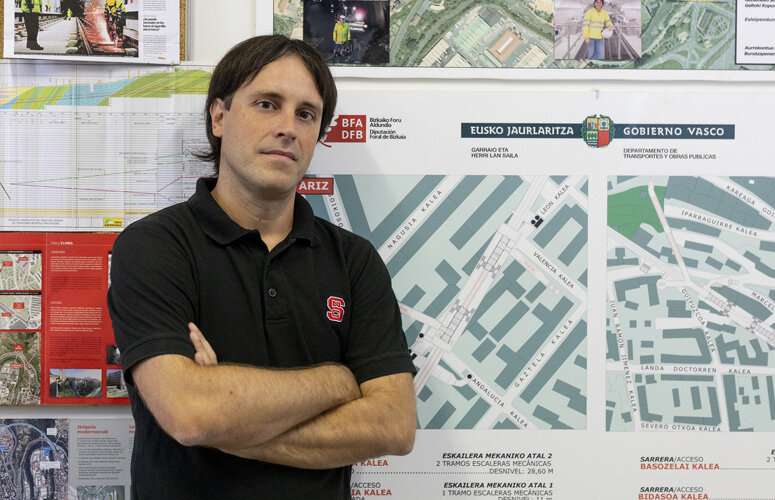Models designed to predict when and how the roads of Bizkaia will deteriorate

A researcher at the UPV/EHU's Faculty of Engineering-Bilbao has developed behaviour models of the international roughness index (IRI) and the coefficient of transverse friction to predict the future situation of the highway network of Bizkaia. The models provide the chance to predict highway repairs, to consider the type of repairs that need to be carried out and to optimize budget allocations.
He analysed data on the main interurban highway network of Bizkaia so that he could explore how the road pavements of the highways deteriorate and that enabled him to develop some deterioration models.
Thanks to these models, it is possible to find out when and to what extent the road pavements will deteriorate, to predict the repair work and also to find out how much the repairs will cost. "The data obtained on the roads have not been analysed until now to find out how a road changes and deteriorates. With the equations we have developed, we can find out, for example, the condition of the roads in 10 years after a specific number of vehicles have driven along them. So we can make predictions before the 10 years have elapsed and work on a strategy to optimize the effect that these repairs will have on the budget," explained the engineer Pérez-Acebo.
Two indicators
The data on the international roughness index (IRI) and the coefficient of transverse friction (skid resistance) were used in the research. The first "is an index to measure road pavement irregularity and is widely used across the world. As can be expected, as road pavements deteriorate, the index value worsens," said Pérez-Acebo. "Skid resistance measures the degree of risk in vehicles coming off the road on bends," he added. "That provides an opportunity to find out which material needs to be applied to the road wearing course."
The models developed by Heriberto Pérez for the IRI can be used for new conventional two-lane highways with a flexible or semi-rigid pavement, whereas the model developed for skid resistance can be used for any type of road—conventional ones as well as highways or motorways—and for all the materials routinely used in carriageway layers.
According to the researcher, the models provide excellent results. "By using fewer parameters than in some other models, we have achieved very similar precision; however, the potential for error is always present: One often does not know why one section deteriorates more that another along the same kilometre of road," he explained. Right now, they are working in collaboration with the Chartered Provincial Council of Bizkaia to analyse road pavements inside tunnels.
More information: Heriberto Pérez-Acebo et al. Skid resistance prediction for new two-lane roads, Proceedings of the Institution of Civil Engineers - Transport (2017). DOI: 10.1680/jtran.17.00045
Provided by University of the Basque Country





















